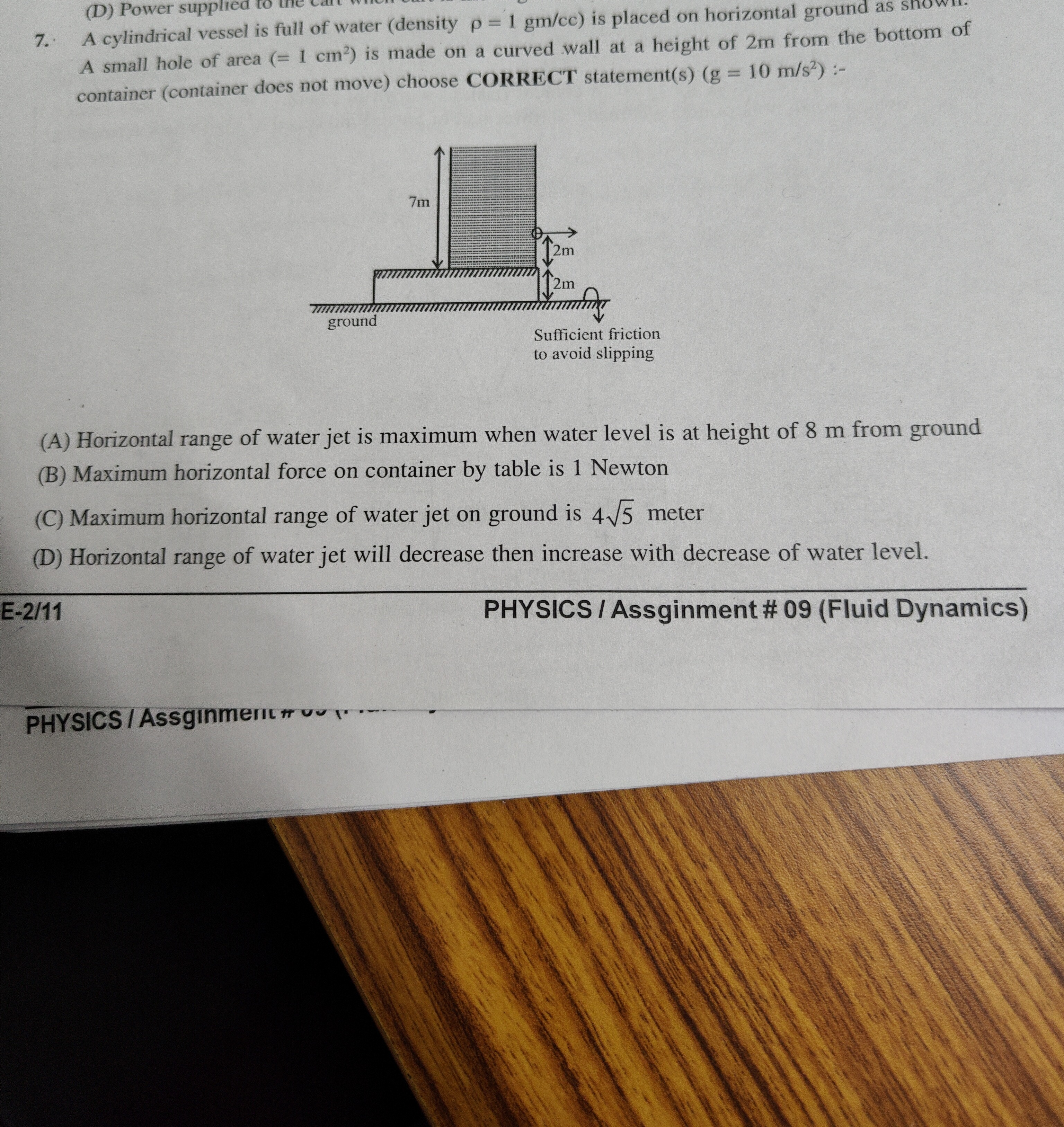Question
Question: A cylindrical vessel is full of water (density $\rho$ = 1 gm/cc) is placed on horizontal ground as s...
A cylindrical vessel is full of water (density ρ = 1 gm/cc) is placed on horizontal ground as shown. A small hole of area (= 1 cm2) is made on a curved wall at a height of 2m from the bottom of container (container does not move) choose CORRECT statement(s) (g = 10 m/s2) :-
(A) Horizontal range of water jet is maximum when water level is at height of 8 m from ground
(B) Maximum horizontal force on container by table is 1 Newton
(C) Maximum horizontal range of water jet on ground is 45 meter
(D) Horizontal range of water jet will decrease then increase with decrease of water level.
PHYSICS / Assginment # 09 (Fluid Dynamics)

Horizontal range of water jet is maximum when water level is at height of 8 m from ground
Maximum horizontal force on container by table is 1 Newton
Maximum horizontal range of water jet on ground is 45 meter
Horizontal range of water jet will decrease then increase with decrease of water level.
C
Solution
The velocity of water efflux from a hole at a depth d below the free surface is given by Torricelli's law: v=2gd. The horizontal range R of the water jet is given by R=v×t. The time of flight t is determined by the vertical motion: h=21gt2, so t=g2h. Thus, R=2gd×g2h=4hd, where d is the depth of the hole from the free surface and h is the height of the hole from the ground. If H is the height of the water level from the ground, then d=H−h. So, R=4h(H−h).
(A) For a fixed hole height h=2 m, the range is R(H)=4×2×(H−2)=8(H−2). This is an increasing function of H. Thus, the range is not maximum at H=8 m.
(B) The horizontal force exerted by the water jet is F=ρAv2=ρA(2g(H−h)). With ρ=1000 kg/m3, A=10−4 m2, g=10 m/s2, and H=7 m, h=2 m, we get d=5 m, v=10 m/s. F=1000×10−4×(10)2=10 N. This force increases with H.
(C) The range R=4h(H−h). If h=2 m, R=8(H−2). If the maximum water level is H=12 m, then R=8(12−2)=80=45 m. This is stated as the maximum horizontal range.
(D) For a fixed hole height h=2 m, the range R(H)=8(H−2) decreases as the water level H decreases (for H>2).
